Wednesday, 9:30am
21 March 2018
Great display in Harlem
Inspiring exhibitions at the Schomburg Center for Research in Black Culture illustrate the dynamic power of graphic design. By Robert Newman
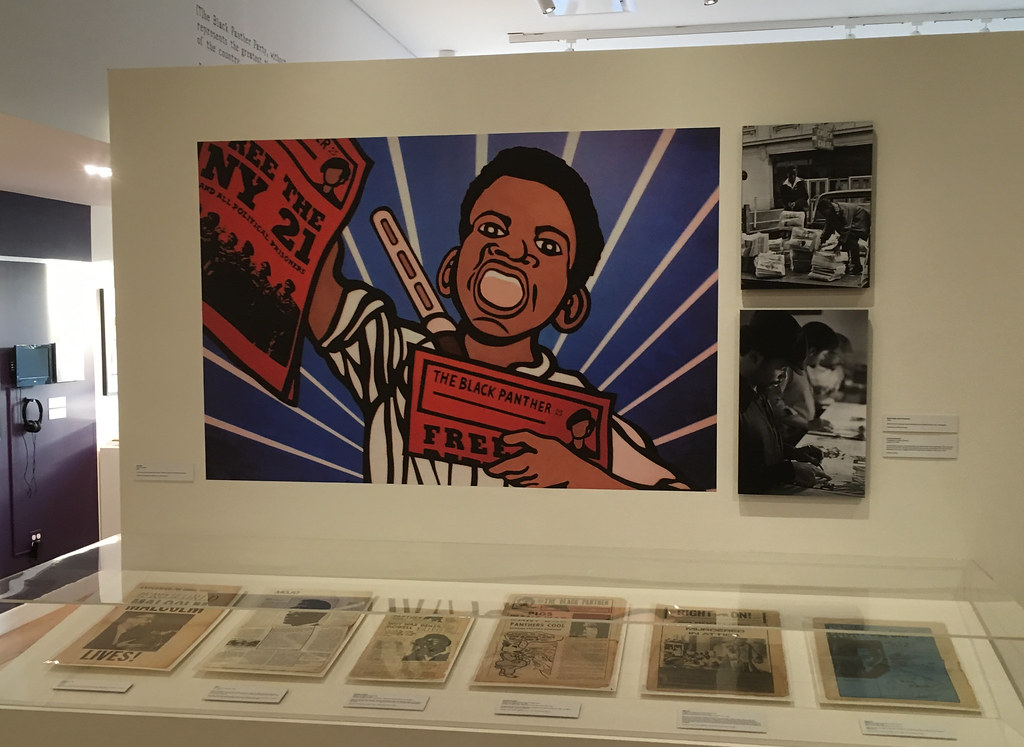
If, like me, you’ve been both inspired and entertained by the cultural moment that the Black Panther movie has engendered, writes Robert Newman, you’ll want to see two equally inspiring and entertaining visual exhibitions at the Schomburg Center for Research in Black Culture in New York City: ‘Power in Print’ and ‘Black Power!’.
Both shows feature posters, magazines, books, buttons, leaflets, photographs and more from the civil rights and black power movements in the United States during the 1960s and early-mid 70s, and are packed with dynamic examples of politically-oriented graphic design and artwork.
Identity for ‘Black Power’ exhibition at the Schomburg Center, Harlem, New York, United States, 2018.
Top: installation view courtesy Schomburg Center, 2018.
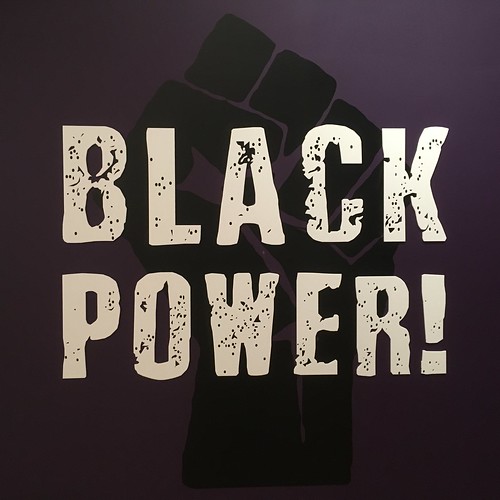
At the moment I can’t say whether I’m more obsessed with Black Panther or these two shows (which I’ve seen four times), but they have many things in common, especially the fact that they are both cultural and political moments that speak to powerful movements in the black community while at the same time inspiring brilliant artistic statements. (Be warned, ‘Power in Print’ ends on 31 March 2018.)
‘Power in Print’ is a collection of posters from the Center’s Art and Artifacts Division, the majority produced during the civil rights and black power movements of the 1960s and 70s (with a smattering created during political struggles of later years). The description of the show says that ‘posters were the social media and digital design of the 1960s and 1970s — a way to mass-produce messaging through images and text and share information widely.’ Stylistically, the poster design is extremely diverse, ranging from sophisticated, polished graphics and illustration printed in four colours to homemade, hand-drawn styles that are reminiscent of punk gig posters from a later era, with scratchy images and black-and-white reproduction. What they all share is graphic punch, a brash impassioned voice, and a pure sense of visual honesty and directness.
‘Afro-American Solidarity with the Oppressed People of the World’. Poster by Emory Douglas, 1969.
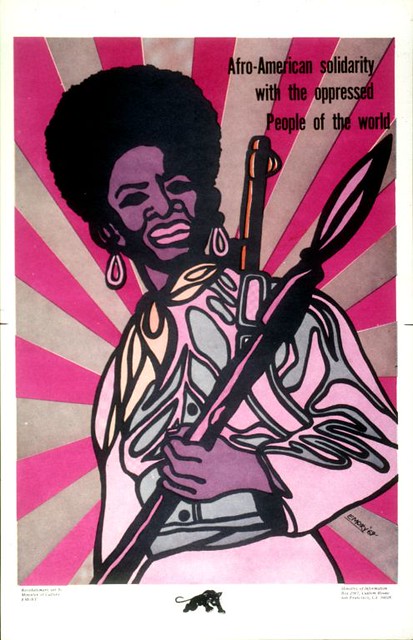
Posters from ‘Power in Print’: SNCC (Student Nonviolent Coordinating Committee), 1967, and ‘Together’, 1970.
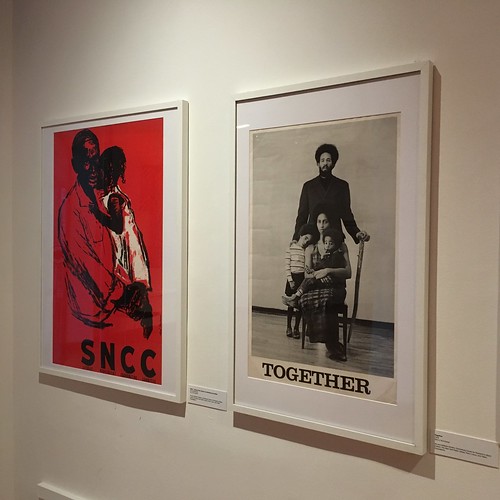
There’s so much visual goodness in this collection it’s hard to know which pieces to single out. The centerpieces are floor-to-ceiling blow-ups of posters by Black Panther Party Revolutionary Artist Emory Douglas. No matter how well you know his images, seeing them at this giant scale is different. My favourite Douglas poster in this show is the 1969 ‘Afro-American Solidarity with the Oppressed People of the World’, created with bright splashes of pink and black, and showcasing Douglas’s brilliant use of shading and Zipatone patterns to push the boundaries of the limited production values of the Black Panther Party newspaper (where this work originally appeared).
Another favourite is the uncredited 1969 ‘Free the New York Panther 21 Power to the People’ poster, with its Day-Glo colours and psychedelic-patterned background. Other posters are more familiar, including Rupert Garcia’s famous ‘Libertad Para Angela Davis’ with its iconic high-contrast photo and bold blue, black and red graphics, and illustrator Paul Davis’s strong black woman portrait illustration for the ‘Bread and Roses’ poster created in 1978 for the 1199 union. There’s also a very cool, and very bold, young Brad Holland illustrated poster from the early 1970s to help raise money for the Attica Brothers Legal Defense (ABLD) fund.
Poster for BALSA (Black American Law Students Association).
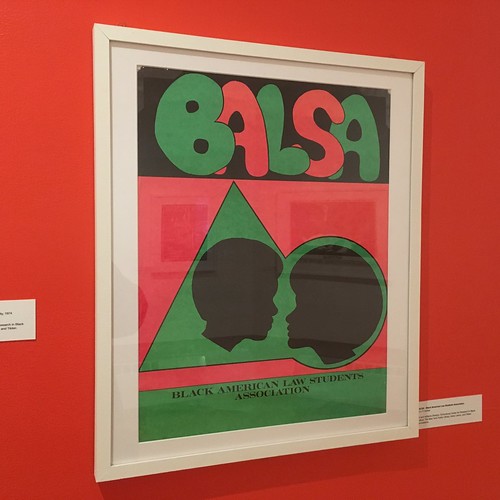
Having spent a good part of this period myself drawing posters for a variety of social causes, I totally understand where the homemade materials are coming from: no resources, no access to type, cameras or other graphic arts tools, but a passion to get across a message. I love the funky hand typography of the ‘BALSA’ poster (Black American Law Students Association), with its red, black and green colour scheme, the 1974 Brandeis University ‘Celebration of Black Unity’, and ‘A Call to Black Youth’, a 1968 memorial to Malcolm X featuring James Baldwin, H. Rap Brown, and LeRoi Jones — all without designer credits, all created completely by hand, and all amazingly cool and inspiring.
While you’re visiting ‘Power in Print’ be sure to look through the inner windows, which look out over the Schomburg reading room. On permanent display there are the four panels of Aaron Douglas’s ‘Aspects of Negro Life’ mural, painted in 1934 as the Harlem Renaissance was winding down. Douglas will be honoured later this year with the posthumous award of the 2018 AIGA Medal.
Poet LeRoi Jones aka Amiri Baraka. Portrait by Emory Douglas.
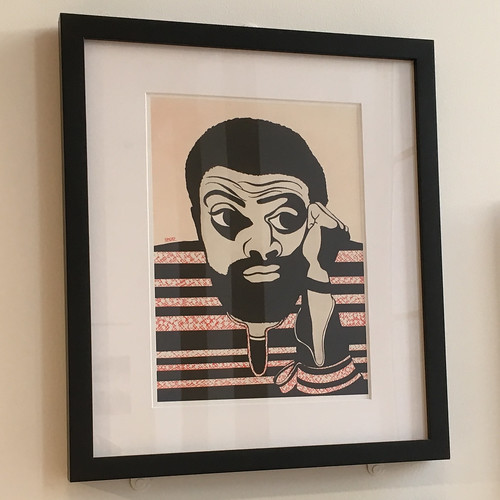
Still image of Isaac Hayes, who composed the influential soundtrack for the movie Shaft. ‘Blaxploitation’ exhibition at the Schomburg Center in Harlem.

‘Black Power!’ is on display in the Schomburg’s upstairs gallery. Here you’ll find a rich, smartly-designed, eye-popping collection of books, magazines, newspapers, leaflets, more posters, buttons, photographs and more, including a separate gallery devoted to video segments from Blaxploitation movies. This collection is smartly well displayed and broken up into thematic sections, and every time I visit I find something new to obsess about.
Most recently I was taken with the collection of Black Arts Movement books and ’zines; I’ve also studied the display case filled with Black Panther and Young Lords newspapers, as well as political journals and magazines such as Black Dialogue, Soulbook, and The Black Scholar. As with the poster show downstairs, the design and visuals are bold, bright and passionate, much of it created by young, untrained hands with great creativity that stretched the boundaries both of existing design modes and production limitations. This is great, inspiring work!
Poster for poetry season, late 1960s.
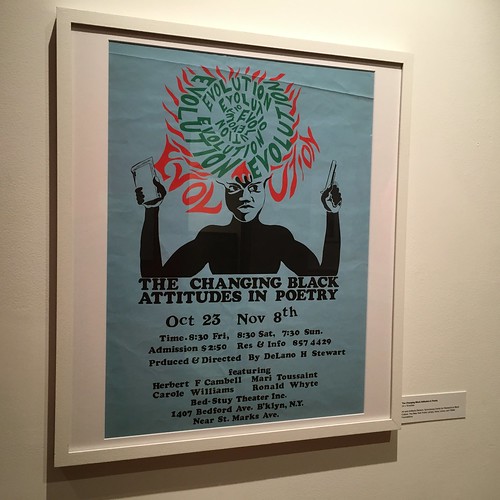
Poster by US illustrator Paul Davis, 1968.
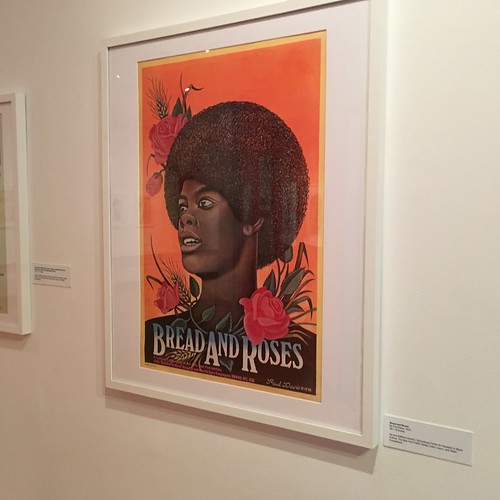
The exhibition ‘Black Power!’ invites conversation and human interactivity. Each time I’ve visited I’ve ended up in animated chats with other gallery-goers. The last time I visited the Schomburg there was a ‘Black Lives Matter Teen Conference’ filling the space, with dozens of teens sprawled on the floors creating ‘Afro-Futuristic collages’ influenced by the art on the walls. This shows the power of both these exhibitions: that graphic design and imagery meant to motivate and inspire and provoke 50 years ago can still today create conversations and excitement among people of all ages and backgrounds. You must not miss ‘Black Power!’, or ‘Power in Print’.
Robert Newman, magazine art director, New York City
• For those who can’t make it in person to see ‘Black Power!’, check out the Schomburg’s Black Power Resource Guide online, which is packed with more information, lots of cool images and good learning tools and links.
More displays from ‘Black Power’. Images courtesy Schomburg Center.
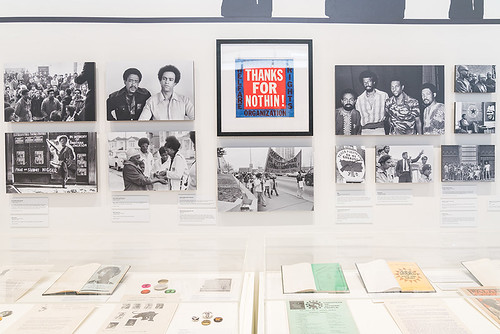
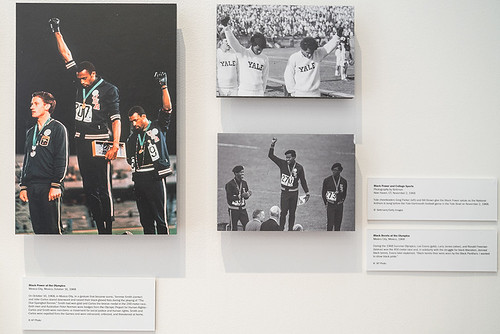
Schomburg Center lobby.

Eye is the world’s most beautiful and collectable graphic design journal, published quarterly for professional designers, students and anyone interested in critical, informed writing about graphic design and visual culture. It is available from all good design bookshops and online at the Eye shop, where you can buy subscriptions and single issues.
